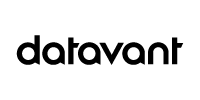- Home
- What we do
- Market
- Payers
- Interoperability
INTEROPERABILITY
Broadening interoperability horizons for Payers
Modernizing Healthcare with comprehensive data integration solutions and services
.webp?width=800&height=775&name=Interoperability-(for-Health-Plans).webp)
SUCCESS STORY
WHITEPAPER
ARTICLE
REPORT
INTEROPERABILITY
Enabling seamless care driven by data
Extend interoperability beyond traditional data ingestion frameworks like HL7, FHIR, and CCDAs. Modernize with CitiusTech’s comprehensive interoperability solutions that encompass not only clinical data but also areas like prior authorization, claims data sharing, and Provider directory management. Leverage these integrated data exchanges to drive efficiency and improve outcomes across operations.
Regulatory
enforcement
FHIR adoption and architecture
Real-time, standards-based interface development
App and data
integration
Device data
integration
Supplemental data capture
Professional services for comprehensive support

features
Connecting the dots for better care outcomes
Leverage deep expertise
Build interoperable systems with our rich interface development using leading EAI tools like Ensemble, MIRTH, Rhapsody etc., implementation, and integration experience across tools, platforms, and standards like FHIR, HL7, IHE, DICOM, X12.
Fast-track value
Accelerate time-to-value with pre-built libraries, data models, and other accelerators.
Stay compliant
Adhere to the latest standards and compliance directives.
SUCCESS STORIES
Solving some of the greatest challenges in Healthcare

Case Study

Case Study
PARTNERS
Creating an ecosystem of limitless possibilities

SERVICES
Shaping Healthcare possibilities with our expertise



Data Engineering & Data on Cloud
Making Healthcare data the backbone of your organization's strategy




Explore other Services
Harness deep domain expertise and customized digital solutions to craft a seamless and integrated healthcare experience. With CitiusTech, you can also bridge the gap between healthcare and technology, fostering a healthier future.






.png?width=1920&height=1080&name=Consulting2_Menu_1%20(1).png)
















